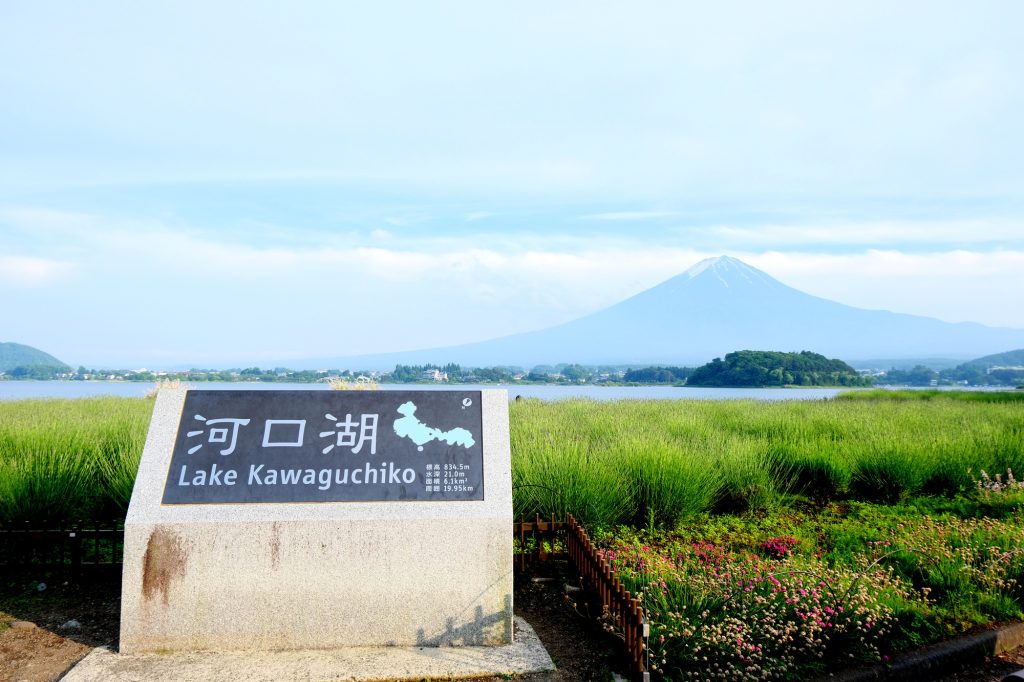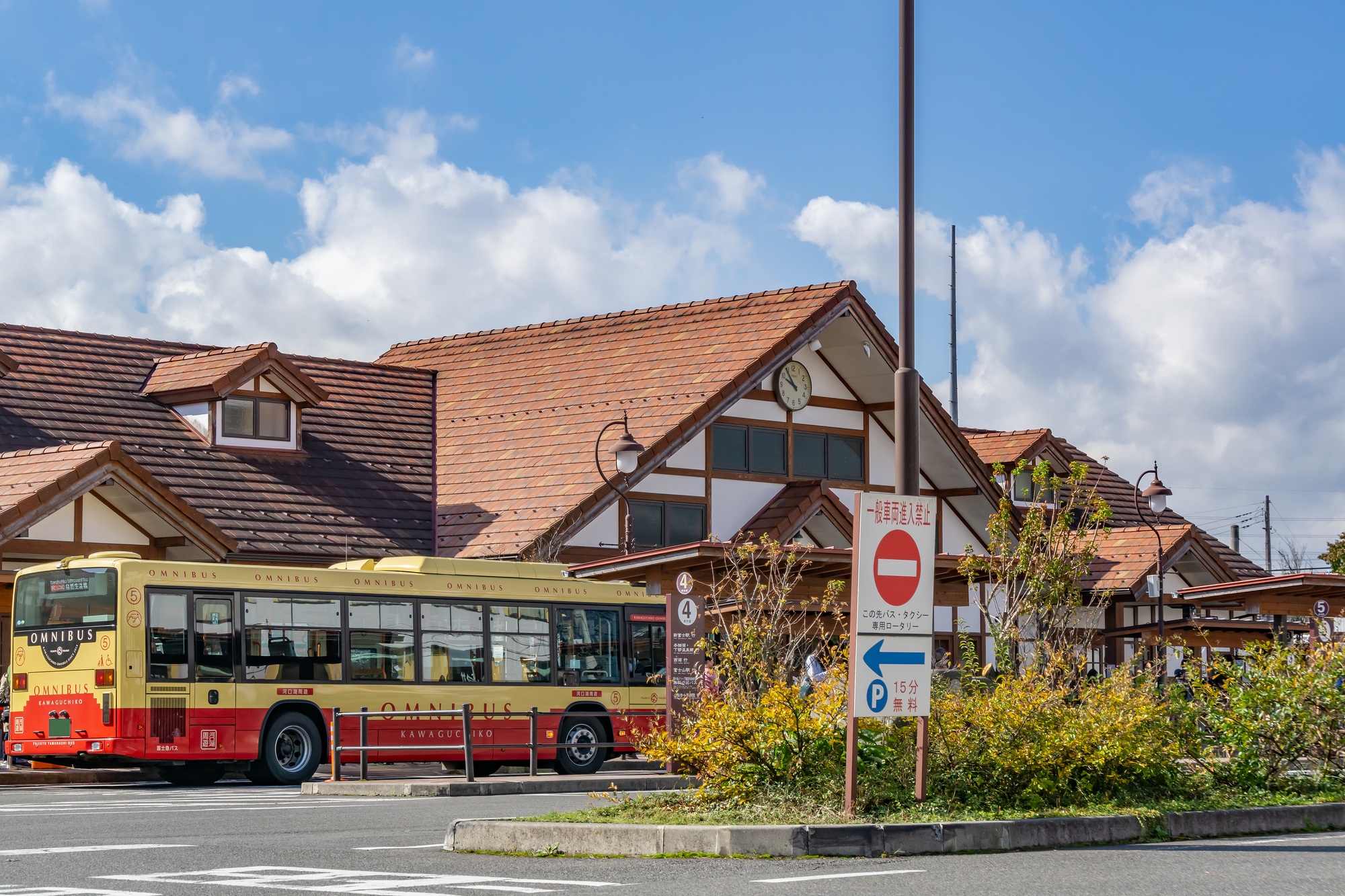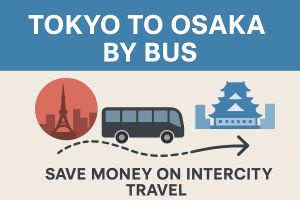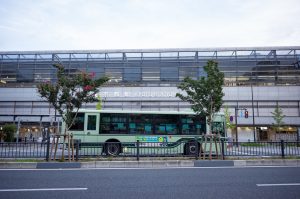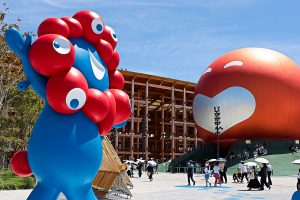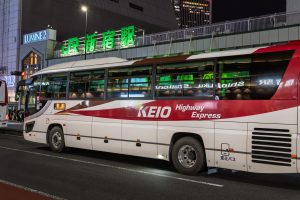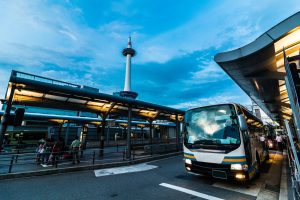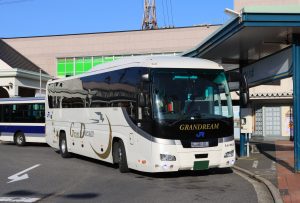Lake Kawaguchi (Kawaguchiko) is one of the most scenic and popular destinations to view Mt. Fuji. Just two hours from Tokyo, it’s the perfect day-trip destination. And the best way to get there? By direct highway bus. This article explores why the bus is the most efficient and comfortable option, how to book it, and what to expect once you arrive.
Why Choose the Highway Bus?
Compared to the train, taking the bus from Tokyo to Kawaguchiko is more straightforward, less expensive, and often faster. A one-way highway bus ticket typically costs ¥2,000–¥3,000, while trains can cost significantly more and involve transfers.
For instance, a typical train route involves taking the JR Chuo Line from Shinjuku to Otsuki, then transferring to the Fujikyu Railway. This not only takes more time (about 2.5–3 hours total), but also costs closer to ¥3,000–¥4,000 depending on ticket types. In contrast, the bus ride is direct and comfortable. There’s no need to transfer or worry about finding platforms in busy train stations.
Buses are equipped with amenities like reclining seats, air conditioning, and onboard toilets. There’s also space for large luggage underneath the bus. Many travelers appreciate the scenic ride and relaxed experience.
Traveler Tip: Sit on the left side of the bus for a chance to catch your first glimpse of Mt. Fuji as you approach the Kawaguchiko area—especially on clear days.
Where to Catch the Bus in Tokyo
Highway buses to Kawaguchiko depart from multiple locations in Tokyo, so it’s easy to find a station close to your accommodation. Main departure points include:
- Shinjuku (Busta Shinjuku) – The largest and most popular terminal
- Tokyo Station (Yaesu South Exit)
- Shibuya (Mark City)
- Ikebukuro Station
- Akihabara Station
- Some buses also depart from Haneda and Narita Airports
From Shinjuku, the trip takes about 1 hour 45 minutes under normal traffic conditions. Buses from Tokyo Station, Shibuya, and other terminals take around 2 hours.
Most buses run every 30 to 60 minutes during peak hours and slightly less frequently during mid-day. The schedules vary slightly by operator, but services are generally frequent and reliable.
Ticket Prices and Booking Options
Ticket prices typically range from ¥2,000 depending on the time of day, departure point, and seat availability. Late-night or peak holiday departures may be slightly more expensive.
All seats are reserved in advance and come with assigned seating. This means no standing or searching for a spot—it’s a guaranteed, comfortable ride.
Here are the best ways to book your bus ticket:
1. Japan Bus Tickets
This is the most convenient way for international travelers. The website is in English and allows you to search routes, compare prices, and complete your reservation online. Once booked, you’ll receive a confirmation email with your ticket.
2. Bus Operator Websites (Japanese Only)
Websites like Highwaybus.com also offer online booking, but they may be in Japanese. Some do have English pages, but the process may be more complex for non-Japanese readers.
3. Bus Terminals or Convenience Stores
You can purchase tickets in-person at terminals such as Busta Shinjuku or from convenience stores like Lawson or FamilyMart using ticket machines. Note: machines are usually in Japanese and require a basic understanding of how to navigate them.
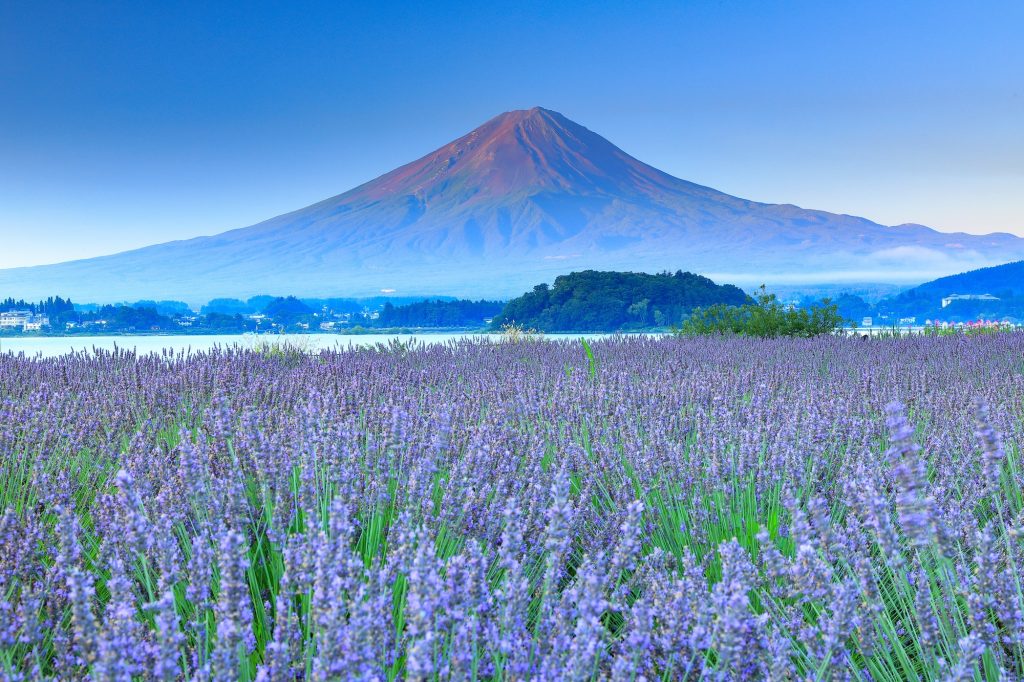
When to Book Your Ticket
Booking early is highly recommended. During popular travel periods—such as autumn foliage season (October–November), spring cherry blossom season (March–April), and weekends/holidays—buses often sell out. It’s wise to book your seats a few days or even weeks in advance if you want a specific time slot.
Even on regular weekdays, early morning and late afternoon departures are popular with day-trippers, so don’t wait until the last minute if you have a tight schedule.
The Bus Ride Experience
Once on board, you’ll be greeted by a clean and comfortable coach. The seating is 2×2 across the aisle, with reclining seats, ample legroom, and large windows for enjoying the view.
Some buses have Wi-Fi, and most long-distance buses include a restroom onboard. Luggage is stored in the lower compartment—usually 1–2 suitcases per passenger are accepted.
As the bus leaves Tokyo, you’ll gradually leave the skyscrapers behind and begin to see countryside scenery. The route follows the Chuo Expressway, heading west into Yamanashi Prefecture. On clear days, keep your eyes peeled for Mt. Fuji as it comes into view.
Arriving at Kawaguchiko Station
You’ll arrive at Kawaguchiko Station, a small and charming hub that acts as the gateway to the Fuji Five Lakes region. The bus drops you off just outside the station building.
Inside the station, you’ll find:
- A tourist information center (English-speaking staff available)
- Coin lockers for luggage
- Souvenir shops and restaurants
- A waiting area and nearby convenience stores
The lake is about a 10-minute walk from the station. Many travelers enjoy the short stroll along the peaceful streets, with Mt. Fuji often visible in the background.
Exploring Lake Kawaguchi
Once at the lake, you’ll be greeted by beautiful views of Mt. Fuji reflected in the water. Popular things to do include:
- Taking a swan boat ride
- Riding the Mt. Fuji Panoramic Ropeway
- Visiting Oishi Park or the Music Forest Museum
- Soaking in a local onsen (hot spring) with views of the mountain
For those wanting to explore further, sightseeing buses depart from outside the station. These buses connect Lake Kawaguchi with other Fuji Five Lakes such as Lake Saiko and Lake Shoji. You can buy 1-day or 2-day sightseeing passes, which are great for hopping on and off throughout the day.
Going to Mt. Fuji’s 5th Station
During the summer climbing season (July to early September), you can take a bus from Kawaguchiko Station to Mt. Fuji’s 5th Station on the Subaru Line. The ride takes about 50–60 minutes and costs around ¥1,500 one-way.
The 5th Station is not only for climbers—it’s also a great place for non-hikers to enjoy high-altitude views, souvenir shopping, and light walking trails.
Returning to Tokyo
Buses from Kawaguchiko to Tokyo depart regularly throughout the day. Like your inbound trip, it’s best to book a return ticket in advance, especially on weekends or in the afternoon when many travelers head back to the city.
Return buses drop off at the same terminals they depart from—Shinjuku, Tokyo Station, Shibuya, etc. Expect similar travel time (about 2 hours), although slight delays may occur during traffic peaks.
Summary: Why the Bus is the Best Option
Here’s why taking a highway bus from Tokyo to Lake Kawaguchiko is the ideal choice:
- Convenient: Direct routes from major Tokyo stations
- Affordable: ¥2,000–¥3,000 one-way
- Efficient: ~2 hours travel time, no transfers
- Comfortable: Reserved seating, onboard restrooms, luggage space
- Scenic: Enjoy countryside views and Mt. Fuji on the way
- Easy Booking: Online reservations in English at Japan Bus Tickets
Whether you’re planning a quick day trip or a full Fuji region getaway, the highway bus offers the best mix of value, ease, and experience.
Ready to travel?
